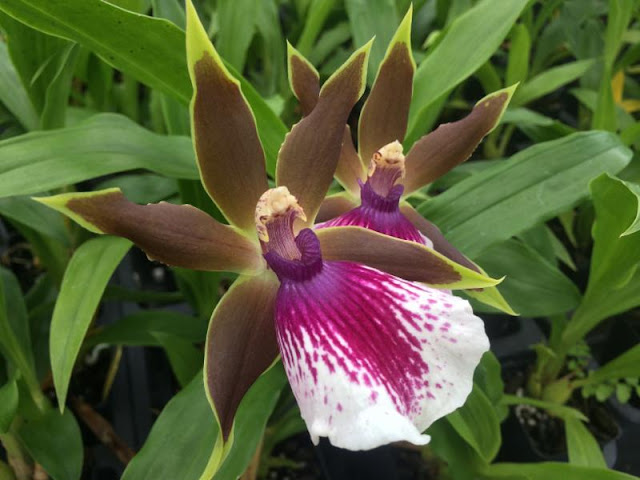
74th annual event set for Scottish Rite Masonic Center

|
|
Zygolum Rhein Harlequin is a striking hybrid orchid. See many others at the April 9-10 Sacramento Orchid Show. (Photo courtesy Sacramento Orchid Society)
|
More proof that gardening life is returning to “normal”: More flower shows!
The 74th Sacramento Orchid Show returns to the Scottish Rite Masonic Center on April 9 and 10.
After coping with Covid restrictions the last two years, the Sacramento Orchid Society welcomes back its many exhibitors and vendors in one of the best tropical plant shows in Northern California.
See hundreds of orchids in many species in full bloom as part of the evocative theme, “Summer Orchid Samba.”
Besides the show, orchid vendors will offer scores of plants for sale including a wide selection of species and rarities. Looking for a specific color or variety? This is the place.
Both days, orchid experts will conduct demonstrations and offer seminars on growing orchids. Learn how to get orchids to rebloom year after year.
Admission is $10. Door prizes will be offered along with tours of the show. Parking is free.
Hours are 10 a.m. to 5 p.m. Saturday, April 9, and 10 a.m. to 4 p.m. Sunday, April 10.
The Scottish Rite Masonic Center is located at 6151 H St., Sacramento.
Details: www.sacramentoorchids.org .
Comments
0 comments have been posted.Sacramento Digs Gardening to your inbox.
Food in My Back Yard Series
May 6: Maintain soil moisture with mulch for garden success
April 29: What's (already) wrong with my tomato plants?
April 22: Should you stock up on fertilizer? (Yes!)
April 15: Grow culinary herbs in containers
April 8: When to plant summer vegetables
April 1: Don't be fooled by these garden myths
March 25: Fertilizer tips: How to 'feed' your vegetables for healthy growth
March 18: Time to give vegetable seedlings some more space
March 11: Ways to win the fight against weeds
March 4: Potatoes from the garden
Feb. 25: Plant a fruit tree now -- for later
Feb. 18: How to squeeze more food into less space
Feb. 11: When to plant? Consider staggering your transplants
Feb. 4: Starting in seed starting
Sites We Like
Garden Checklist for week of May 4
Enjoy this spring weather – and get gardening!
* Plant, plant, plant! It’s prime planting season in the Sacramento area. Time to set out those tomato transplants along with peppers and eggplants. Pinch off any flowers on new transplants to make them concentrate on establishing roots instead of setting premature fruit.
* Direct-seed melons, cucumbers, summer squash, corn, radishes, pumpkins and annual herbs such as basil.
* Harvest cabbage, lettuce, peas and green onions.
* In the flower garden, direct-seed sunflowers, cosmos, salvia, zinnias, marigolds, celosia and asters. (You also can transplant seedlings for many of the same flowers.)
* Plant dahlia tubers. Other perennials to set out include verbena, coreopsis, coneflower and astilbe.
* Transplant petunias, marigolds and perennial flowers such as astilbe, columbine, coneflowers, coreopsis, dahlias, rudbeckia and verbena.
* Keep an eye out for slugs, snails, earwigs and aphids that want to dine on tender new growth.
* Feed summer bloomers with a balanced fertilizer.
* For continued bloom, cut off spent flowers on roses as well as other flowering plants.
* Add mulch to the garden to maintain moisture. Mulch also cuts down on weeds. But don’t let it mound around the stems or trunks of trees or shrubs. Leave about a 6-inch to 1-foot circle to avoid crown rot or other problems.